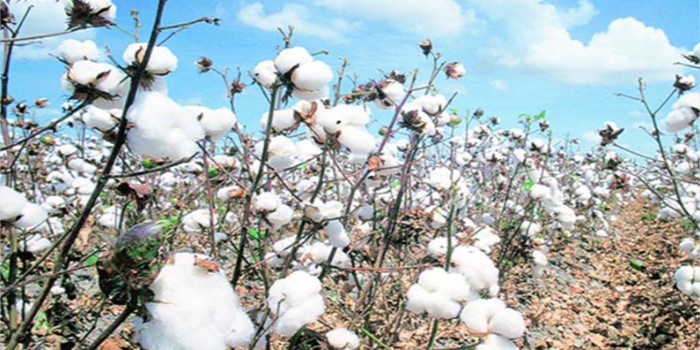
What’s happening in India’s cotton and textile sectors
Mumbai-based Cotton Association of India (CAI) estimated that this year’s Indian crop (October 1, 2019-September 30, 2020) to be 33.55 million bales (170 Kgs each) as against its previous estimate of 33 million bales (170 Kgs each). This is about 550,000 bales higher than the previous estimate.
Recently, Mumbai-based Cotton Association of India (CAI) estimated that this year’s Indian crop (October 1, 2019-September 30, 2020) to be 33.55 million bales (170 kg each) as against its previous estimate of 33 million bales (170 kg each). This is about 550,000 bales higher than the previous estimate.
Also read: Cotton and crisis management
With cotton prices significantly lower than its price in January-February timeframe, lack of full capacity utilization in spinning mills will add to cotton stocks, which may lower the price further according to a few Indian spinning mill executives. CAI predicts the carryover stock to be 5.55 million bales.
“COVID-19 has reduced the consumer purchasing activity, which is the main reason for lack of uptick in the spinning sector,†stated Velmurugan Shanmugam, general manager of Jayalakshmi Textiles, based in Aruppukottai, India. This mill has 72,000 ring spindles and produces finer counts catering to sheeting materials and men’s wear fabrics. As mills normally keep four months stock, mills in India procured cotton in February when the 30-mm cotton was priced around Rupees 40,000 per candy (356 kg). Currently, spot price of this cotton has gone down creating stressful situation in the spinning sector.
Also read: Cotton & face covers
Spinning and other textile segments due to lack of buyers are feeling the pinch in paying interest against working capital, adding uncertainty and stress stated Velmurugan Shanmugam who has been in the spinning industry for 30 years.
Velmurugan Shanmugam agreed that India’s textile sector should use this COVID-19 scenario as an awakening and work towards enhancing its mass production capabilities, enhance its product basket, which has been the case in China. This scribe has been advocating for value-addition to the sector and look for new industrial applications for cotton.
All eyes are on cotton and yarn prices and in fact, it all depends on the consumers in the next few weeks.



